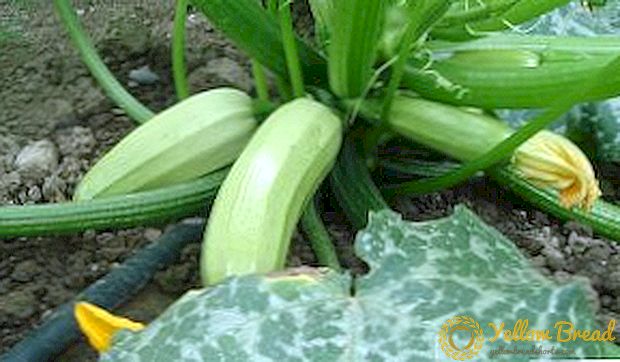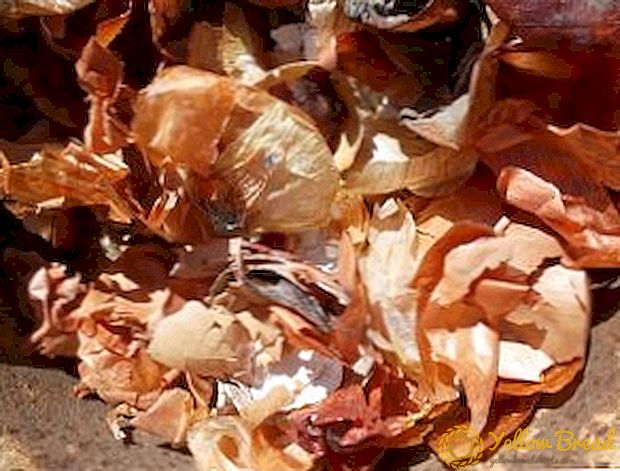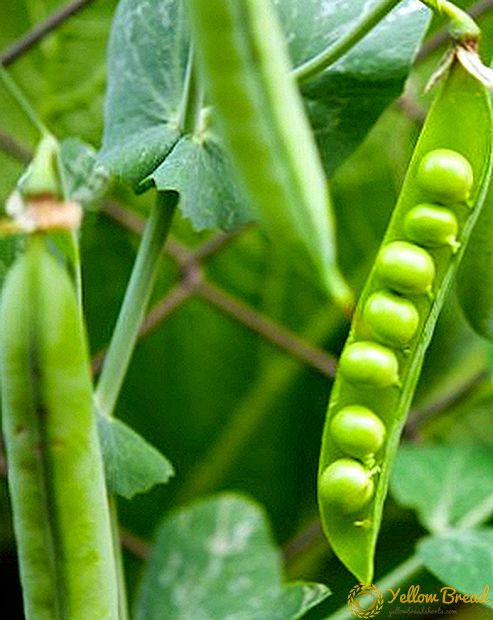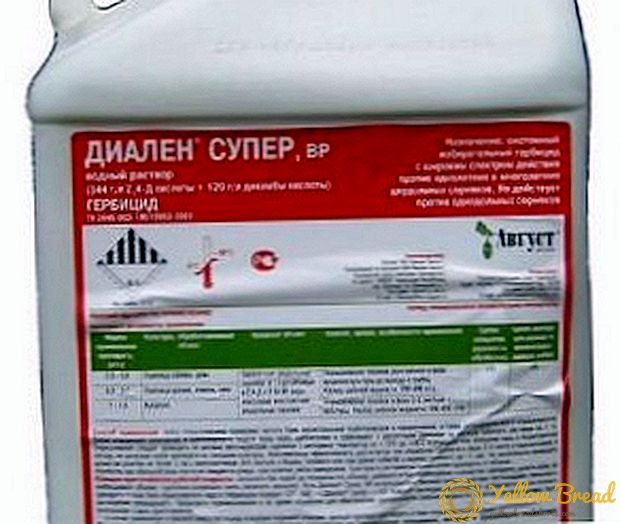 Squashes are such a vegetable crop, which in planting and care is not a problem and gives a good harvest. This article will look at how and when to plant squash seeds in open ground in spring.
Squashes are such a vegetable crop, which in planting and care is not a problem and gives a good harvest. This article will look at how and when to plant squash seeds in open ground in spring.
- Growing conditions
- A place
- The soil
- When to plant
- Weather
- Manufacturer's recommendations
- Moon calendar
- Landing rules
- Basic rules for growing
Growing conditions
Before planting zucchini in open ground, it is important to determine the place for their cultivation and prepare the soil.
A place
This culture will grow well in lighted areas, southern slopes. In the shade, they grow slower and bloom not abundantly, as a result they produce less fruit. The site must be in a place where ground water does not flow nearby, otherwise squash may rot. The best predecessors for this crop are: potatoes, carrots, greens, beets, onions.
The soil
Courgettes prefer loose and fertile soil. The best option would be chernozem or light loamy, which is well fertilized with organic matter. Sour soil is better not to choose.Clay and too wet peaty soil are also unsuitable for this culture.  It is necessary to prepare the soil in the fall. To begin with, it is harrowed with a rake in order to induce weed growth. After about 12 days, they dig deep the ground so that the weed falls deep into the ground. Make a digging for 1 square meter of compost (1 bucket), superphosphate (30 g), potash fertilizers.
It is necessary to prepare the soil in the fall. To begin with, it is harrowed with a rake in order to induce weed growth. After about 12 days, they dig deep the ground so that the weed falls deep into the ground. Make a digging for 1 square meter of compost (1 bucket), superphosphate (30 g), potash fertilizers.
In May, they dig up the earth to a depth of 15 cm and add 20 g of saltpeter to 1 square meter. If the soil is clay, then, in addition to the fertilizers listed above, add river sand (1 bucket) and peat crumb (1 bucket). In the sandy soil make crushed dry clay (1-2 buckets).
When to plant
For beginners, gardeners will be useful information when to plant squash in open ground with seeds and what conditions must be for this.
Weather
Planting squash seeds in open ground produce, depending on weather conditions in the regions. This is usually done at the end of May, when the weather sets to warm and there is no night frost. Seeds germinate well when the temperature of the earth is + 12 ° ... + 15 °. 
Manufacturer's recommendations
The deadline for sowing seeds depends on the desired time of ripening. For early harvest, it is recommended to sow the seeds in April, preferring early varieties of zucchini.
If the crop is planted for the purpose of long-term storage of fruits, then you need to choose varieties with a late fruiting, and sow them in late May. You can calculate the planting date, knowing the exact characteristics of the variety.
Moon calendar
The moon affects the growth of plants as well as all life on Earth. Therefore, many gardeners take into account the recommendations of the Lunar Calendar. Favorable days in May 2018 for planting squash in the ground are (Moscow time):
- from May 6 (21:20) to May 9 (8:00) - the Moon rising, in Libra;
- from May 19 (6:52) to May 21 (13:10) - the Moon is waning, in Pisces;
- From May 27 (14:24) to May 29 (15:12) - the Moon is growing, in Cancer.
- from May 9 (18:31) to May 11 (20:43) - the full moon;
- from May 25 (4:22) to May 27 (5:47) - the new moon.
 Consider when planting squash for seedlings on the lunar calendar:
Consider when planting squash for seedlings on the lunar calendar:- March 30 and 31;
- April 3, 4, 7, 9, 27 and 30;
- May 1, 6 and 7.
Landing rules
This culture planted beds.At the depth of the bayonet, the shovels dig the strips and make holes, keeping to a distance of about 60 cm. In order to make it convenient to look after the shoots, a distance of at least 1 m is kept between rows.
Organic fertilizers should be applied to the well, mixing them with the ground, and sprinkled with warm water. If the soil is light, then the seeds are planted to a depth of about 7 cm, and in heavy soil - by 4 cm. It is best to drop 3 seeds per well. When sprouting several shoots, you need to leave the strongest ones and remove the rest. Next, the holes need to dig in and tamp. In order not to form an earth crust on the surface, it can be mulched humus, straw or peat.
Gardeners advise between the holes to grow dill or mustard - they will saturate the earth with nutrients, and will serve as an ornament beds.
Basic rules for growing
This culture requires quality care and care:
- Watering is necessary once a week, and during droughts - 3 times. It is better to do this closer to the surface of the soil, using water at room temperature.
- Trunk spud after the plant appeared 5-6 leaves.
- Fertilize sprouts with minerals 10 days after sowing to stimulate their growth.When the zucchini begin to bloom, carry out the following feeding, and the third - when the beginnings of the fruit appear.
- We need to clear the land of weeds as it appears. Also, the soil must be loosened once a week, so that moisture and air gets to the roots.
- After the appearance of inflorescences, some gardeners help to pollinate. To do this, plant a spoonful of honey in water and spray the leaves near the ovary. This smell will attract insects, and they will pollinate the plant.
 Fruits that are already ripe, it is necessary to immediately tear, because the bush will be hard, and it will no longer bear fruit. Inflorescences on which the fruits did not start, need to be removed to direct the plant's resources to maintain the already existing small zucchini.
Fruits that are already ripe, it is necessary to immediately tear, because the bush will be hard, and it will no longer bear fruit. Inflorescences on which the fruits did not start, need to be removed to direct the plant's resources to maintain the already existing small zucchini.Caring for a quality plant, you will achieve a good harvest.






